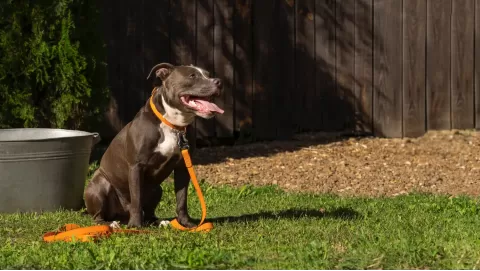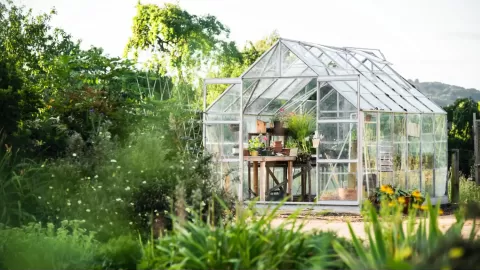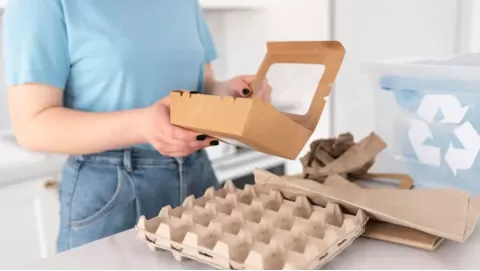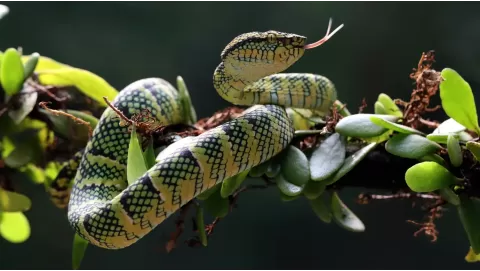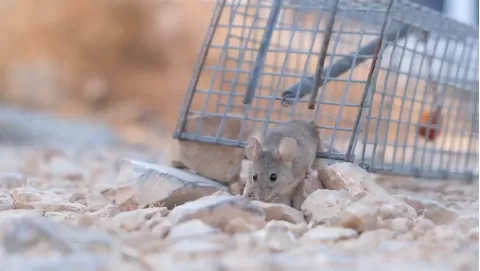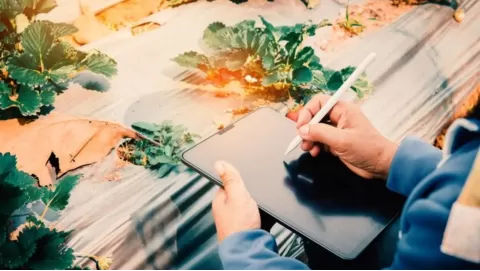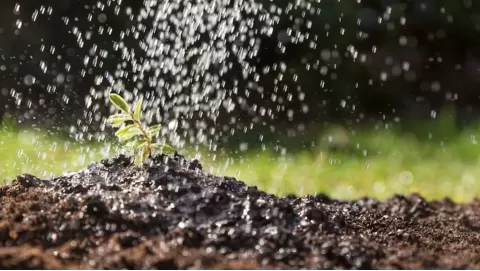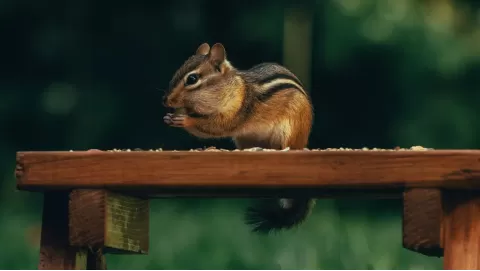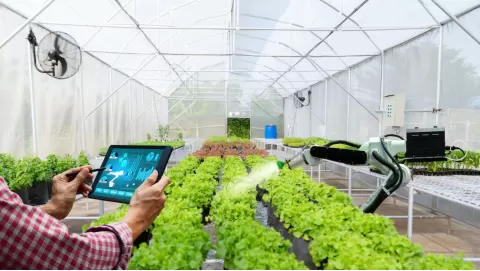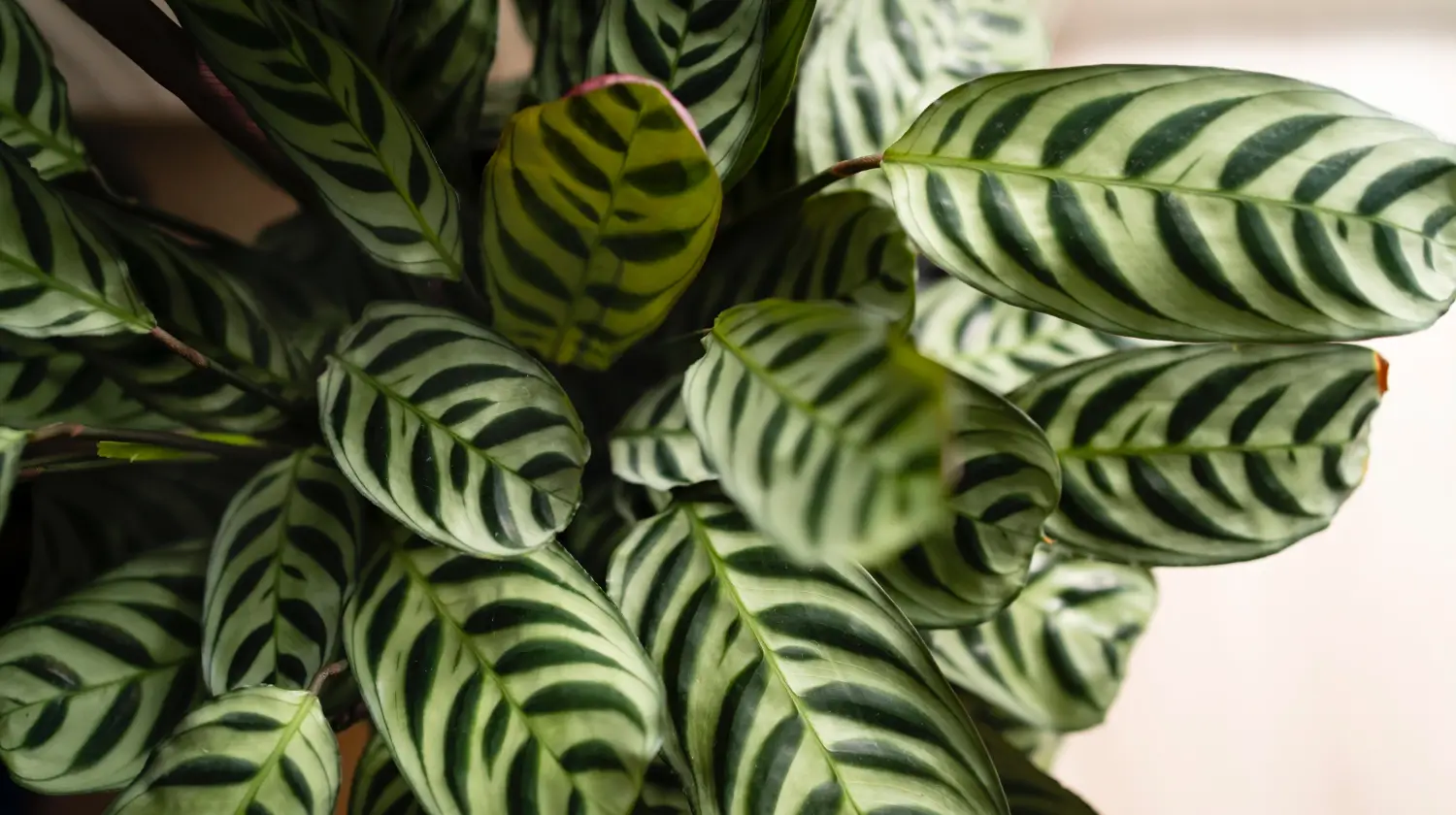
Zebra Plant care guide: Keeping it healthy indoors
People like green stuff, and aesthetically pleasing plants are attractive. Interior plants can enhance the look of a room, reduce stress, and increase productivity. A popular indoor plant is the Zebra plant, which brings in a lot of lovely colours to the area, makes it look prettier, and also helps in maintaining the mental peace of our minds.
- What: The Zebra Plant (Aphelandra squarrosa) is a striking indoor plant known for its dark green leaves with white stripes.
- Ideal For: Bright indoor spaces that need a touch of tropical flair.
- Light: Prefers bright, indirect light; avoid direct sunlight to prevent leaf scorch.
- Watering: Keep the soil consistently moist but not waterlogged; allow the top inch to dry out between waterings.
- Humidity: Thrives in high humidity; mist regularly or use a pebble tray.
- Pro Tip: Feed with a balanced liquid fertilizer every two weeks during the growing season for vibrant foliage and blooms.
The Zebra plant is strikingly different with its green foliage, white stripes and hot pink flowers. Though it can be finicky to care for, it prefers bright, indirect light and soil that drains well. It needs lots of water and humidity, not to dangle too low when deprived of adequate moisture.
Growcycle helps to learn how to grow various indoor plants, including the Zebra plant. The following post is an outline of some of the things I will be covering for the focus of the Zebra plant.
Botany of Zebra Plant
Zebra plants are tropical houseplants with vibrant evergreen leaves. The following are some of its botanical features.
1. Scientific Classification
- Kingdom: Plantae
- Family: Acanthaceae
- Order: Lamiales
- Genus: Aphelandra
- Species: A. squarrosa
- Botanical Name: Aphelandra squarrosa
- Common Name: Zebra plant
- Plant Type: Tree
2. Physical Characteristics
- Leaves: Zebra plant has oval, glossy, dark green leaves with white stripes. The margins of the leaves are slightly crenate.
- Flowers: In the wild, it bears spikes of tiny white-purple flowers, which can also be observed when cultivated indoors.
- Height: This plant can grow from 1 – 3 feet tall and 1 – 2 feet wide, depending on its container and how well it’s tended.
- Hardiness: It is ideal for USDA zones 11-12 and it does not tolerate cold and should be kept at 64 to 70°F.
3. Origin and Habitat
- The Zebra plant is native to the Brazilian Atlantic forest.
- It is a compact, rhizomatous, evergreen perennial characterized by a clumping growth pattern.
4. Reproduction
- Zebra plants can be propagated by stem or leaf cuttings as well as division.
- Gardeners may also propagate it by rooting these cuttings in water or soil.
Types of Zebra Plant
Here is a comparison of some of the common types of Zebra plants:
| Types | Scientific Name | Origin | Size | Leaf Features | Flowers | Light Requirements | Water Requirements |
|---|---|---|---|---|---|---|---|
| Aphelandra Zebra Plant | Aphelandra squarrosa | Brazil | 1-2 feet | Large, glossy green leaves with bright white veins. | Yellow, cone-shaped flowers | Bright, indirect light | Moderate |
| Zebra Cactus | Haworthiopsis fasciata | South Africa | 4-8 inches | Smooth leaf undersides | Very rare flowers | Bright, indirect light | Low |
| Zebra Haworthia | Haworthiopsis attenuata | South Africa | 4-6 inches | Thick, spikey leaves with white horizontal ridges. | Rare flowers | Bright, indirect light | Low |
| Calathea Zebra Plant | Calathea zebrina | Brazil | 2-3 feet | Large glossy green leaves with zebra-like stripes. | Rare flowers | Medium, low light | Moderate |
| Dwarf Zebra Plant | Haworthiopsis limifolia | South Africa | 3-6 inches | Small rosette with rough, wavy leaves | White or pale pink tubular flowers | Bright, indirect light | Low |
| Zebra Aloe | Aloe variegata | South Africa | 6-12 inches | Triangular, fleshy leaves with "zebra" markings in white | Orange to red tubular flowers | Bright, indirect light | Moderate |
| Tiger Zebra Plant | Aphelandra squarrosa 'Louisae' | Brazil | 1-2 feet | Smaller leaves with more delicate white veining | Small, yellow flowers | Bright, indirect light | Moderate |
Benefits of Growing Zebra Plants in the Garden
The following are some of the benefits of growing Zebra plants in the garden:
- Air Purification: it purifies the air molecules containing bacteria, formaldehyde, and benzene and makes the room clean to live in.
- Low Maintenance: It’s low-maintenance and good for the novice and for the busy plant lover. It can survive even without water.
- Stress Reduction: Take care of a Zebra plant and enjoy a stress-free day. A small act that can also be a small way to defuse tension, bit by bit.
- Symbolism of Prosperity: This plant is believed to be an omen of good fortune in nearly all cultures. Financial well-being can also be fostered via a home of one’s own.
- Aesthetic Appeal: The dark green leaves with white veins of the Zebra plant are beautiful on their own, and they add to your décor.
- Adaptability: It thrives in a variety of lighting conditions, including full sun and shade. This flexibility means it's ideal for a number of spaces.
- Easy Propagation: It can be easily propagated by gardeners. You can pass it on to other people as well; you just snip a piece of the stem, and it will root and grow.
- Healing Properties: The Zebra plant is not a known healing plant, but some do use the Zebra in traditional medicines for various reasons. It celebrates the plant’s history in support of health.
- Educational Value: The Zebra plant is a good teaching tool for children. It provides a tactile way to show them how to take care of living things and gain an appreciation for nature.
Related: Garden care products for sale
How to Grow and Propagate Zebra Plant?
There are many ways you can grow and multiply zebra plants. Here are a few popular ones for gardeners:
1. Propagation Through Divisions
Propagating Zebra plants via divisions is an easy way to get more of them.
- Begin by removing this plant from its pot. Once you have it out, set it on its side, and gently break up the root ball.
- Then, pull the plant apart into smaller sections, each with healthy leaves, stems, and roots.
- If the roots are too tough to pull apart by hand, gardeners can cut them using a sharp knife or scissors.
- After cutting the sections, pot them in fresh, best-quality potting soil.
- Water the divisions well after potting to help settle the soil and place them in bright light.
2. Propagation Through Leaf Cuttings
This is the simplest method to Zebra plant propagation by leaf cutting.
- Begin with a healthy, green leaf from the plant.
- Then, to cut the leaf at the base, use a clean knife.
- Ensure some white stem tissue remains attached; this stem tissue will grow new roots and pups.
- Then let the cut leaf dry a little. This process, known as ‘callousing’, inhibits root rot and is necessary for the successful propagation of the plant.
- Then, place the base of the leaf in a pot of soil that drains well.
- Soil should be moist but not wet. Avoid overwatering; root rot can result from being waterlogged.
- Watch the leaf-cutting and water evenly.
- New growth will begin to emerge in a few weeks.
3. Propagation Through Stem Cuttings
Gardeners can propagate the Zebra plant easily by taking cuttings.
Gather tools and locate a healthy new stem. Select a healthy new stem to cut. Young stems are quicker to root than mature ones, which decreases chances for diseases and rot. Of that branch, select the one strongest for the best results. Follow these steps:
- Make a clean cut just below a leaf node, where the leaf attaches to the stem, using sharp scissors or a knife to prevent the plant from drying out. Make sure the cutting has at least two pairs of leaves to promote rooting and growth.
- Dip the severed tip in rooting hormone or a quality propagation promoter to enhance the chances of rooting. Lastly, plant the cutting in soil or water it to stimulate root growth.
4. Propagation Through Air Layering
One of the best ways to propagate new plants is through air layering. This tactic promotes root formation on a stem while it is still attached to the main plant.
- First, choose a healthy stem; don’t choose a weak one.
- Remove the leaves from the middle of the stem, and leave a few inches of stem bare.
- Then, cut half way through the stem.
- Insert a toothpick into the cut to hold it open and create room for the roots to develop. Next, wet a wad of sphagnum moss and tuck it around the stem the way you would a blanket.
- Secure the moss and stem tightly with plastic wrap or foil.
- Allow the roots to grow for approximately 1 to 2 months.
- Cut off the stem when it’s grown, and pot it up.
Zebra Plant Care
Ideal conditions are essential for the right Zebra plant care. Here are a few things a gardener will need to watch over to grow this plant:
1. Light
Zebra plants prefer indirect light or light shade since they're used to growing on the forest floor in warm, humid regions beneath the canopies of trees. Do not expose them to direct sunlight, as you can blister their leaves. But if they are entirely shaded, they may not bloom, and that can be a disappointment.
2. Soil
The Zebra plant does best in neutral to slightly acidic soil. Gardeners can use a repotting mix from a garden store, which is acceptable, but sand will help with drainage, ensuring the roots do not remain in water. If you want your plants to flower, just feed them a little fertilizer once a week or so during spring and summer, when they do most of their growing.
3. Water
Zebra plants prefer nice, moist soil, so the well-draining soil is ideal. Gardeners must, however, be careful, because too much water can make the leaves wilt. The zebra plant is best watered every couple of weeks, until saturated, allowing water to drain from the base of the plant.
You can replicate a warm rainstorm, which is perfect for these plants. So whenever you water the plant, and also when you’re cleaning up around the plant, direct the water beneath the leaves, not above them, to help stave off issues like leaf rot.
4. Temperature and Humidity
Zebra plants originate in some climates, so they thrive in moderate temperatures. Keep them in a place that stays at least 60 degrees and no lower than 55 degrees.
Humidity is also important for zebra plants, so try to keep humidity levels around 60 to 70 percent. Gardeners cannot raise this plant’s humidity level with a humidifier or by misting it lightly with lukewarm water from a spray bottle. In general, aim to maintain the plant at a consistent temperature. Big temperature swings are to be avoided, so keep it away from vents that could make it too hot or cold.
5. Fertilizers
If you fertilize, it does help it grow better, particularly with blooming. Gardeners will want to feed it every week or two, particularly during spring and early summer, when it is growing. For the natural fertilizer the plant needs, reach for the right lawn fertilizer that is good for both the leaves and the flowers.
6. Potting and Repotting
To encourage the best growth from Zebra plants, repot them every one to two years into a container just a little bigger than before, using fresh potting soil. To pot, ease away the free soil surrounding the plant, and lift it gently by the base. Add one-and-a-half to two inches of fresh dirt to the new pot and then set the plant in the center, being careful not to disturb the roots. Fill in around the plant with fresh potting soil, tamping it as you go, but doing so in enough time that you do not compact the soil too tightly and the pot continues to drain.
Related: Tree & Plant Care products for sale
Common Problems and Solutions
Zebra plants are pretty low maintenance, but that doesn’t mean they’re easy to handle if they run into issues. The following are some of the problems the plant can get:
1. Falling Off Plant Leaves
- Cause: Overwatering, underwatering, browning leaf tips, dry air
- Solution: Give it a drink and keep air humid so leaves don’t fall.
2. Curling Leaves
- Cause: Too much bright light, overheating
- Solution: Carry the plant to a sunny spot, but not dangerously so, for a little bit of a cooldown, and see if it won’t curl its leaves.
3. Brown Leaves
- Cause: Too much light, over-fed
- Solution: Relocate the plant to indirect light, decrease feeding.
4. Dry Leaf Tips
- Cause: Dry air, underwatering
Solution: Consider adding a humidifier and a little distilled water to increase the moisture for plants.
Pest and Disease Prevention in Zebra PlantsZebra plants have beautiful foliage but can also be affected by pests and diseases that affect their appearance. It is important to spot the signs early to keep the plant healthy.
Zebra plants have stunning foliage, but that does not mean they are immune to pests and diseases that can affect their appearance. It's helpful to identify the signs early to prevent the plant from becoming unhealthy.
Common Pests
- Aphids: Look for clusters of these small, pear-shaped bugs and a sticky coating on the leaves.
- Spider Mites: You will see fine webbing and small moving dots, almost like grains of salt, under the leaves.
- Mealybugs: Look for the white, fluffy clumps found at the joints of leaves.
- Thrips: These bugs leave behind silver lines or spots on leaves, and may distort them also.
Pest Prevention Techniques
- Quarantine: Before adding the new plants to a new collection, keep them separate for a few weeks to ensure they’re pest-free.
- Inspection: Check the Zebra Plant regularly for pests, especially under the leaves and around the stems.
- Cleanliness: To prevent pests from entering the area around the plant, keep it tidy by removing debris and fallen leaves.
- Beneficial Insects: Bring in helpful bugs like ladybugs to help keep the pest population in check.
Disease Recognition and Treatment
Fungal Infections: Spots or a powdery mess on the plant's leaves might indicate a fungal issue. To avoid this, ensure good air circulation and try to keep the leaves relatively dry.
Root Rot: When the leaves begin to turn yellow and wilt, just take a look at the soil; if it’s too muddy and you see that the roots are black, you surely have just poured a whole lot of water in the pot and failed to have proper drainage.
Treatment: Follow the label instructions for the best fungicides or bactericides. And, of course, be sure to identify the problem before you begin treatment.
FAQs
Is the Zebra plant good for the home?
Yes, they are great for home use. They add a pop of bright green with striking patterns, can help purify the air, and bring a calming effect. Don’t forget, they thrive in bright indirect light, humidity, and regular watering.
Do Zebra plants do best in sun or shade?
Zebra plant does well in medium or bright indirect light. Scorched leaves can occur in too much direct sun, but deep shade won’t help them grow either. It’s a good idea to put them near a window where they’ll receive filtered light.
What is the advantage of a Zebra plant?
It can elevate your indoor aesthetics, assist in clearing the air, and set a chill mood. With one-of-a-kind patterns, it will look awesome in the middle. Taking care of one helps cultivate mindfulness and makes anyone feel closer to nature.
The Bottom Line
Zebra plants are houseplants that are sought after for their ability to clean the air indoors and improve mood and mental well-being. They offer a selection of colors and leaves, which are a popular selection for residences. Zebra plant is simple to grow using techniques like air layering or stem cuttings.
Growcycle provides useful advice to help people grow healthier plants and make their gardens more beautiful.
Disclaimer: This material is for informational purposes only and should not be relied on for legal, medical, financial, or any other form of professional advice.
Sources:
1. Wiki - Aphelandra squarrosa
2. Planetnatural - Cultivating a Healthy Zebra Plant




